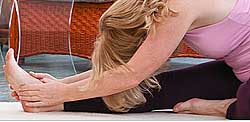
Designing Websites for Yoga Practitioners
This is the Griffen Mill design guide to designing websites for yoga practitioners, part of our website design guide series. Over the years, the individual designers within Griffen Mill have created websites for many yoga practitioners, via our key client WebHealer. As one of the therapies that are usually referred to as a traditional alternative discipline, a yoga website must, in our opinion, convey a professional and health oriented identity, yet avoid coming across as too clinical. The designer must also be mindful of the target audience and colour choices. In general, for yoga websites, warm colours tend to work better than cooler ones.
Guide Structure
This guide, like most in this series, has the following key sections.
- Typical design requirements for yoga websites
- Choosing colour for yoga websites
- Shape and related aesthetic decisions
- Images and photographs for yoga websites
This guide continues with section one, and you may use the above links to read more about later sections, which will go into more detail. In each case, the approach used to communicate our ideas leans towards examples, such as examples of images useful for a yoga website or palettes that often appeal to yoga practitioners.

Typical design requirements for yoga websites
The practice of yoga covers physical, mental and spiritual disciplines, which originate from ancient India that now can be used as a complementary intervention to many health concerns, as well as being a popular system of physical exercise. Along with the spiritual goals of practising yoga, it is also used to reduce stress, therefore a calm and relaxing website design can help to demonstrate this element of what the practice aims to create. This can be achieved by using a warm and healing colour palette that uses natural shades and skin tones, such as yellows and greens. When done well this will help evoke a sense of security and comfort.
When choosing the colour palette, the designer should be mindful of the images used and the tones used within them, so often there will be natural tones to complement. To help with a harmonious colour scheme, the photographs used can involve a composition that includes the range of colours in the palette, or one that emphasises one natural colour that complements the overall scheme. The images used within a yoga website may include those of people practising the different yoga postures, or those of a more natural and gentle nature that refer well to the meditative side of the the practice. Images that show the physical positions included in a yoga class can be clear and effective at explaining the practitioners method of working. e.g. Yoga stretch.
Finally, shapewise a yoga website will tend to have gentle flowing edges, as opposed to the geometric layouts commonly used within counselling website designs. The designer should be mindful of the importance of a human, inviting and welcoming appeal along with a more grounded and professional outlook.